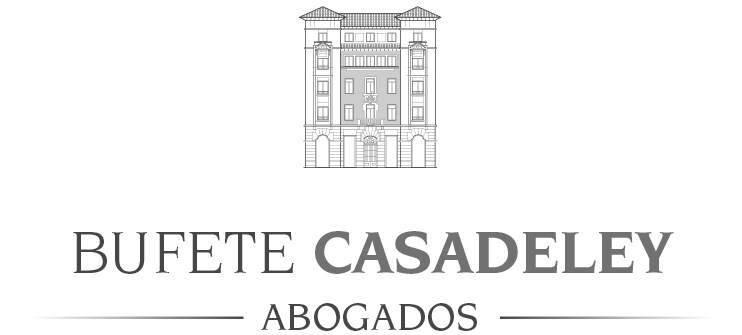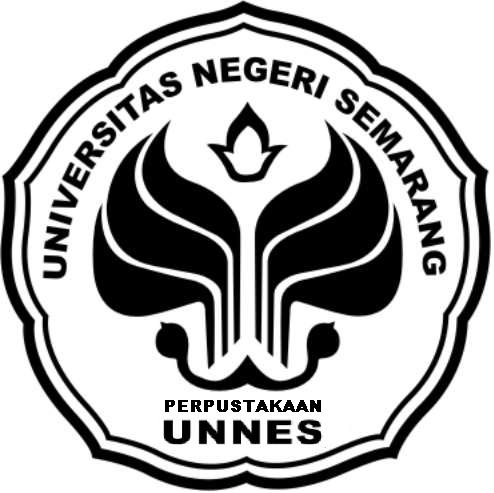VISUALLY SIGNIFICANT INFANTILE PERIOCULAR HEMANGIOMA ABSTRACT A 1 MONTH
6 THE EMOTIONAL DEVELOPMENT OF VISUALLY IMPAIRED CHILDREN DRAUDITORILY IMPAIRED VISUALLY IMPAIRED M EMORANDUM OF UNDERSTANDING
BOARD OF SERVICE TO THE BLIND AND VISUALLY IMPAIRED
DISTINGUISHING VISUALLY SIMILAR OBJECTS THROUGH TACTILE AND IMAGE SENSING
MUSEUMS AND THE VISUALLY IMPAIRED PLACES OF ADAPTATION
NAME POST TEACHING ASSISTANT TO SUPPORT VISUALLY IMPAIRED CHILD
Visually Significant Infantile Periocular Hemangioma
Abstract:
A 1 month, 27 day old female presents with a compound periocular hemangioma located on her left upper eyelid. The hemangioma is potentially amblyogenic as it induces a visually significant ptosis and anisometropic astigmatism.
I. Case History
Patient demographics: 1 month, 27 days; female; caucasian
Chief complaint: Patient NM was referred to Children’s Mercy Hospital Ophthalmology clinic on 05/14/15 at the age of 1 month and 27 days due to the presence of a visually significant hemangioma of the left upper eyelid.
Ocular, medical history: Full term gestation; mother had gestational diabetes; no systemic conditions; dermatology described the lesion on 05/12/15 as an 11x13mm bluish, telangiectatic patch with overlying erythematous full raised plaque with subtle central graying, causing ptosis.
Medications: see treatment section below
II. Pertinent findings
Extraocular muscles intact, no strabismus, pupils normally reactive with no APD
Retinoscopy (post-Cyclomydril):
05/14/15: +1.00+1.50x090/+1.00+2.00x090
06/15/15: +0.50+2.50x100/pl+4.00x080
07/14/15: +2.50+1.50x090/+1.50+3.50x080
Anterior Segment:
05/14/15 and 06/15/15: hemangioma of the left upper eyelid inducing ptosis OS (9mm vs 5mm orbital fissures)
07/14/15: hemangioma of the left upper eyelid significantly improved; ptosis resolved
Posterior
segment unremarkable
III. Differential diagnosis
Primary/leading: rhabdomyosarcoma, lymphangioma, chloroma, neuroblastoma, orbital cysts, and cellulitis
Others: Vascular malformations, tumors of bony origin (e.g. fibrous dysplasia, juvenile ossifying fibroma), vascular tumor (e.g. hemangiopericytoma), tumors of connective tissue origin (e.g. myofibromas/dermoid tumors).
Systemic
conditions to consider: PHACE
syndrome, Kassabach-Merritt syndrome, diffuse neonatal
hemangiomatosis
IV. Diagnosis and discussion
Hemangiomas are growths composed of proliferating capillary endothelial cells. Occurring in 1%-3% of newborns, hemangiomas are more common in females, premature infants, and after chorionic villus sampling. Hemangiomas grow rapidly during the early months, followed by periods of regression and involution, although the degree of regression and involution is extremely variable (12).
Periocular hemangiomas are generally classified as preseptal, intraorbital, or compound/mixed. Periocular hemangiomas can put an infant at risk for amblyopia secondary to ptosis (occlusion amblyopia) and/or induced astigmatism (anisometropic amblyopia) (12).
Patient NM was at risk for both occlusion and anisometropic amblyopia due to her compound periocular hemangioma inducing a visually significant ptosis and anisometropic astigmatic refractive error. NM was treated with propanolol, which quickly and effectively decreased the size of her hemangioma, eliminating the amblyogenic factors.
V. Treatment, management
Treatment options for periocular hemangioma:
Observation (small, no risk of amblyopia)
Propanolol (treatment of choice since its discovery in 2008)
Consider risks of systemic B-blockers in all infants (bradycardia, hypotension, hypoglycemia, bronchospasm), but especially those with PHACE syndrome (may increase risk of stroke)
Topical Timolol gel (proven effective in superficial and some deeper hemangiomas)
Corticosteroids (previous first line of treatment)
Interferon alfa-2a, vincristine (severe cases)
Pulsed-dye laser (superficial-no effect on deeper tissues)
Surgical excision
Patient NM’s Treatment:
05/12/15: Dermatology initiated treatment with Prednisone (15mg/5mL) 3.5 mL PO daily in the morning after feeding; Timoptic XE 0.5% ophthalmic gel BID applied to hemangioma; Zantac 15 mg/mL oral syrup, 1 mL PO BID
05/20/15: (after the patient had completed EKG testing with normal results) dermatology d/c Prednisone, Timolol, and Zantac and began 0.9 mL Propanolol (20mg/5mL) solution TID PO (about 1.59mg/kg/day)
07/28/15: Propanolol increased to 1.1 mL Propanolol (20mg/5mL) solution TID PO (about 2mg/kg/day)
The hemangioma had a mild decrease in size with prednisone treatment but significantly decreased after initiating propanolol treatment.
VI.
Conclusion
It is imperative that periocular hemangiomas are co-managed with dermatology and treatment is initiated as quickly as possible in those infants with amblyogenic risk factors. It is recommended patients with amblyogenic periocular hemangiomas be seen by an eyecare specialist at least monthly to monitor ptosis and/or astigmatism. If astigmatism remains amblyogenic, glasses should be prescribed. If ptosis remains amblyogenic, consult with the patient’s dermatologist to discuss modifying treatment.
It is recommended patients with non-amblyogenic periocular hemangiomas be seen by an eyecare specialist every three months until the hemangioma has stabilized or has regressed. These patients must be monitored carefully due to the risk of the hemangioma enlarging and inducing amblyopia.
VII. Literature Review
Aletaha, Maryam, et al. “Oral Propranolol for Treatment of Pediatric Capillary Hemangiomas.” Journal of Ophthalmic and Vision Research 7.2 (2012): 130-133. PubMed. Web. 29 July 2015.
Alniemi ST, Griepentrog GJ, Diehl N, Mohney BG. “Rate of Amblyopia in Periocular Infantile Hemangiomas.” Archives of Ophthalmology 130.7 (2012):943-944. Web. <http://archopht.jamanetwork.com/article.aspx?articleid=1214800#Comment> 31 July 2015.
Ambika, Hariharasubramony, Chankramath Sujatha, and Yadalla Harikishan Kumar. “Topical Timolol: A Safer Alternative for Complicated and UnComplicated Infantile Hemangiomas.” Indian Journal of Dermatology 58.4 (July-Aug 2013): 330-333. PubMed. Web. 29 July 2015.
Bang, Genie M. and Pete Setabutr. “Periocular Capillary Hemangiomas: Indications and Options for Treatment.” Middle East African Journal of Ophthalmology 17.2 (Apr/Jun 2010): 121-128. Web. <http://www.ncbi.nlm.nih.gov/pmc/articles/PMC2892126/> 31 July 2015.
Chan, Hsien, Catherine McKay, Susan Adams, and Orli Wargon. “RCT of Timolol Maleate Gel for Superficial Infantile Hemangiomas in 5- to 24-Week-Olds.” Pediatrics 131.6 (June 2103): 1-10. PubMed. Web. 29 July 2015.
Ellis, Forrest J. “Pediatric Eyelid Disorders.” Harley’s Pediatric Opthlamology. 6th Ed. Ed. Leonard B. Nelson and Scott E. Olisky. Philadelphia: Wolters Kluwer, 2014. 338-355. Print.
Léauté-Labrèze, Christine, et al. “Propranolol for Severe Hemangiomas of Infancy.” The New England Journal of Medicine 358.24 (June 2008): 2649-2651. PubMed. Web. 29 July 2015.
Moehrle, Matthias, et al. “Topical Timolol for Small Hemangiomas of Infancy.” Pediatric Dermatology 30.2 (March ⁄ April 2013): 245-249. PubMed. Web. 29 July 2015.
Pope, Elena, and Ajith Chakkittakandiyil. “Topical Timolol Gel for Infantile Hemangiomas: A Pilot Study.” Archives of Dermatology 146.5 (May 2010): 564-565. PubMed. Web. 29 July 2015.
Salvin, Jonathan H. “Managing Periocular Capillary Hemangioma.” Review of Opthalmology. 5 June 2013. Web. <http://www.reviewofophthalmology.com/content/d/pediatric_patient/c/41055/>. 31 July 2015.
Shayan, Yasaman R., Julie S. Prendiville, and Ran D. Goldman. “Use of propranolol in treating hemangiomas.” Canadian Family Physician vol 57 (March 2011): 302-303. PubMed. Web. 31 July 2015.
Skuta, Gregory L, et al. “Benign Tumors.” Pediatric Opthalmology and Strabismus. 2012-2013 ed. American Academy of Ophthlamology, The Eye M.D. Association. Print.
NEW JERSEY COMMISSION FOR THE BLIND & VISUALLY IMPAIRED
POSITION OF THE VISUALLY IMPAIRED PEOPLE IN SERBIA AND
T EXAS SCHOOL FOR THE BLIND & VISUALLY IMPAIRED
Tags: hemangioma, significant, periocular, abstract, infantile, month, visually
- ZÁVĚREČNÁ ZPRÁVA O REALIZACI PROJEKTU PROGRAMU TRANS V ROCE
- RESOLUCIÓN GENERAL 32502012AFIP VENCIMIENTOS FISCALES AÑO 2012 SE ESTABLECE
- NAAM FUNCTIE WONDCONSULENT FUNCTIECODE BLAD 4 VAN 4 FUNCTIEOMSCHRIJVING
- HÁZIREND MISKOLCI HERMAN OTTÓ GIMNÁZIUM 2020
- BOBBY JINDAL GOVERNOR BRUCE D GREENSTEIN
- PREGHIERA PER LA 47° GIORNATA MONDIALE DI PREGHIERA PER
- LWRD LICENSE APPLICATION ENGINEERING REPORT COVER SHEET
- NUISANCES SONORES ENTRE PARTICULIERS INTERVENTION DU MAIRE 1
- ENCUENTRO ENTRE EMPRESARIOS HISPANOS Y ESPAÑOLES (MADRID 309210 2004)
- KÉPZÉSI REND A MAGYAR PSZICHODRÁMA EGYESÜLET KÉPZÉSI RENDJE AZ
- ROTARY ECLUB PUERTO RICO Y LAS AMÉRICAS
- MASSACHUSETTS TESTS FOR EDUCATOR LICENSURE® (MTEL®) TEST DEVELOPMENT SUMMARY
- CSIO TRANSMISSION SESSION STANDARD OPTIONS CSIO STD C110 VERSION
- TECNOLOGÍA INDUSTRIAL I ACTIVIDADES DE ENERGÍAS ALTERNATIVAS I (SOLAR
- PROFFERS LAUREL HILL ADAPTIVE REUSE AREA RZFDP 2012MV008 OCTOBER
- CASE TITLE [WELL NOTIFICATION TITLE] REFERENCE NUMBER
- RECURSO ANTE EL COMITÉ DE JUSTICIA DEPORTIVA DE NAVARRA
- PREZENTACE SPORTOVNÍHO KLUBU ORIENTAČNÍHO BĚHU OSTRAVA JSME ČLENOVÉ SPORTOVNÍHO
- ELS VALORS POLÍTICS DE LA INDEPENDÈNCIA DELS ESTATS UNITS
- FIJACION%20EN%20LISTA%20N%20072-%20GRUPO%20DE%20COMPETENCIA%20DESLEAL
- UPRAVLJANJE ČVRSTIM I OPASNIM OTPADOM FOND ČASOVA 30
- PHÒNG GD&ĐT BẢO YÊN TRƯỜNG TH SỐ 2 TT
- MUHASEBE VE İŞLETME KAVRAMI MUHASEBE EKONOMIK FAALIYETLERDE
- P EMERINTAH PROVINSI JAWA TENGAH RUMAH SAKIT JIWA DAERAH
- APPLICATION FORM FOR EXPRESSION OF INTEREST FOR CONTRACTS FOR
- ALLA PROVINCIA DI BRINDISI SEGNALAZIONE CERTIFICATA DI INIZIO ATTIVITA’
- NA OSNOVU ČLANA 7 TAČKA 16 I ČLANA 9
- ALL FOR THE BETTER A STORY OF EL BARRIO
- ASAP AUTOMATED SECURITY ACCESS PROCESSING (ASAP) REQUESTING ACCESS TO
- (IGS) INSTRUCTIVO GESTIÓN DE SEGURIDAD (CILC) CI LUJÁN DE
INFORMACIÓN ADICIONAL VISAS Y PERMISOS DE INGRESO AL PAIS
 GRADES 1 TO 12 DAILY LESSON LOG SCHOOL ABIACAO
GRADES 1 TO 12 DAILY LESSON LOG SCHOOL ABIACAO ATTACHMENT 3 TO THE RULES OF PROCEDURE OF THE
ATTACHMENT 3 TO THE RULES OF PROCEDURE OF THE SENTENCIA DEL TRIBUNAL SUPREMO (SALA 4ª DE LO SOCIAL)
SENTENCIA DEL TRIBUNAL SUPREMO (SALA 4ª DE LO SOCIAL)NES OPTOMETRY STRATEGY FOCUSSING ON EXCELLENCE 2015 2020
 4 ABSTRAK RUDI FAILIN PILIHAN BAHASA DALAM WACANA IKLAN
4 ABSTRAK RUDI FAILIN PILIHAN BAHASA DALAM WACANA IKLANLTPOA MINUTES NOVEMBER 11 2014 BOARD MEMBERS PRESENT PRESIDENT
 РАСШИРЕНИЕ ПОНЯТИЯ ЧИСЛА I МНОЖЕСТВО НАТУРАЛЬНЫХ ЧИСЕЛ – ЭТО
РАСШИРЕНИЕ ПОНЯТИЯ ЧИСЛА I МНОЖЕСТВО НАТУРАЛЬНЫХ ЧИСЕЛ – ЭТОUZASADNIENIE DO UCHWAŁY NR XV992007 RADY MIEJSKIEJ W OKONKU
 LOCALIZADOR FECHA LIMITE IMPORTE SOLICITUD DE DESPLAZAMIENTO EVENTOS
LOCALIZADOR FECHA LIMITE IMPORTE SOLICITUD DE DESPLAZAMIENTO EVENTOS STABILNA SPRZEDAŻ W POLSCE I EUROPIE ESKETAMINA SPÓŁKI Z
STABILNA SPRZEDAŻ W POLSCE I EUROPIE ESKETAMINA SPÓŁKI Z BÉSAME… HASTA QUE TU MUERTE NOS SEPARE DANZATEATRO DURACIÓN
BÉSAME… HASTA QUE TU MUERTE NOS SEPARE DANZATEATRO DURACIÓNANTECKNINGAR FÖR TÄVLING FÖRDA VID GOLFTING I BORLÄNGE DEN
 PLIEGO DE BASES TÉCNICAS PARA LA CONTRATACIÓN DE LA
PLIEGO DE BASES TÉCNICAS PARA LA CONTRATACIÓN DE LA SALTAR NAVEGACIÓN IR DIRECTAMENTE AL CONTENIDO PRINCIPAL COMIENZA MENÚ
SALTAR NAVEGACIÓN IR DIRECTAMENTE AL CONTENIDO PRINCIPAL COMIENZA MENÚSTANDARD ANALYTICAL FRAMEWORK IN SRI LANKA VULNERABILITY ANALYSIS AND
 GUÍA DOCENTE DE LA ASIGNATURA NOMBRE DE LA ASIGNATURA
GUÍA DOCENTE DE LA ASIGNATURA NOMBRE DE LA ASIGNATURA CREACIONES DE NUEVAS CARRERAS DE EDUCACIÓN SUPERIOR APROBACIÓN DE
CREACIONES DE NUEVAS CARRERAS DE EDUCACIÓN SUPERIOR APROBACIÓN DEYLCGA JUNIOR CHAMPIONSHIP GARFORTH GOLF CLUB 18TH JULY 2021
 notification-to-iras-of-the-death-of-the-supplementary-retirement-scheme-member
notification-to-iras-of-the-death-of-the-supplementary-retirement-scheme-member